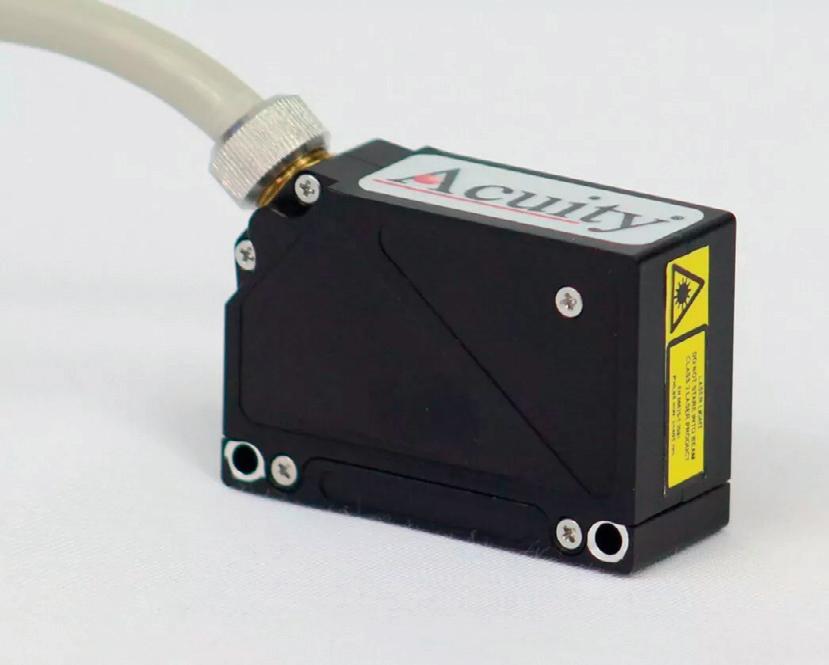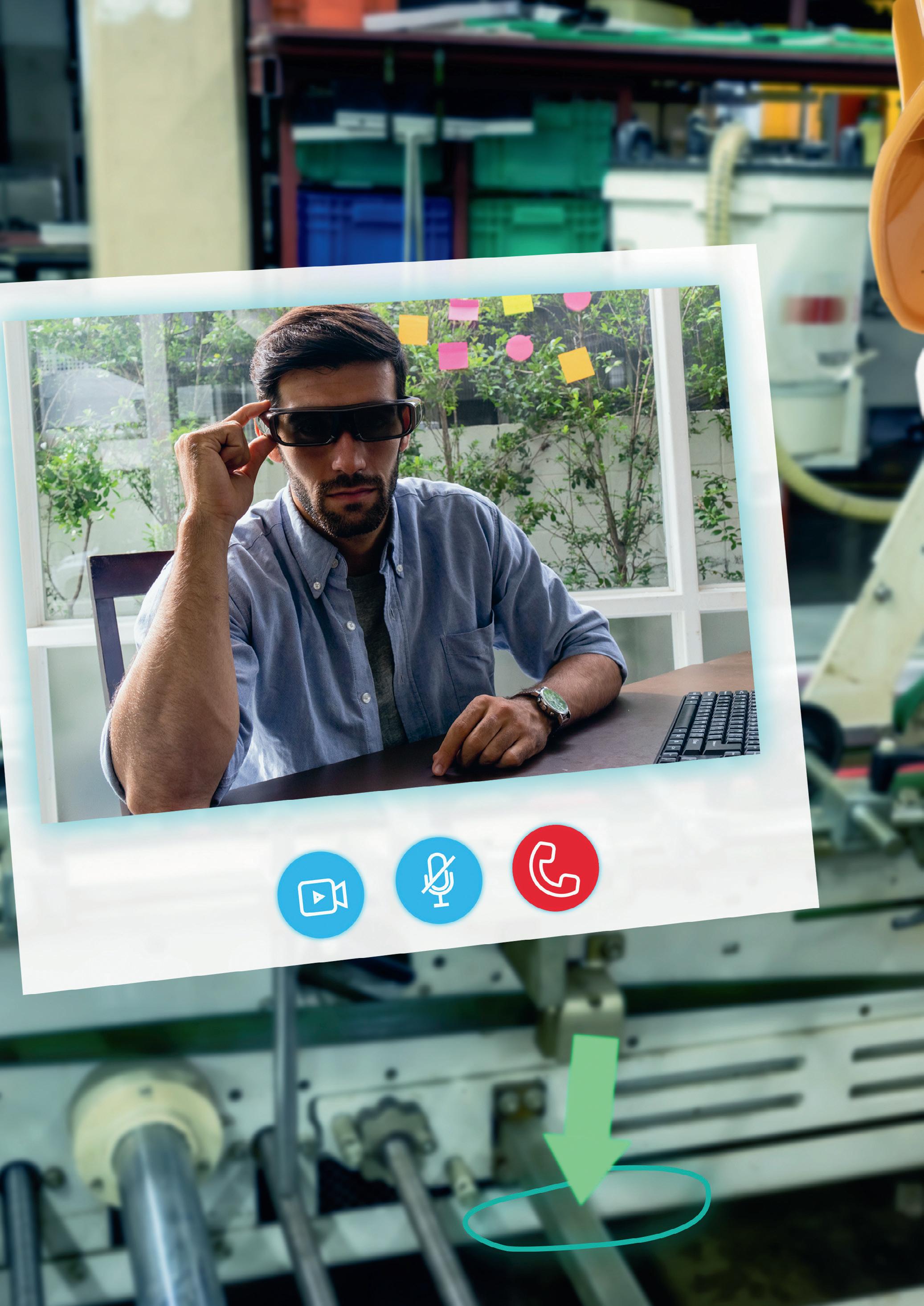
21 minute read
From choice to necessity
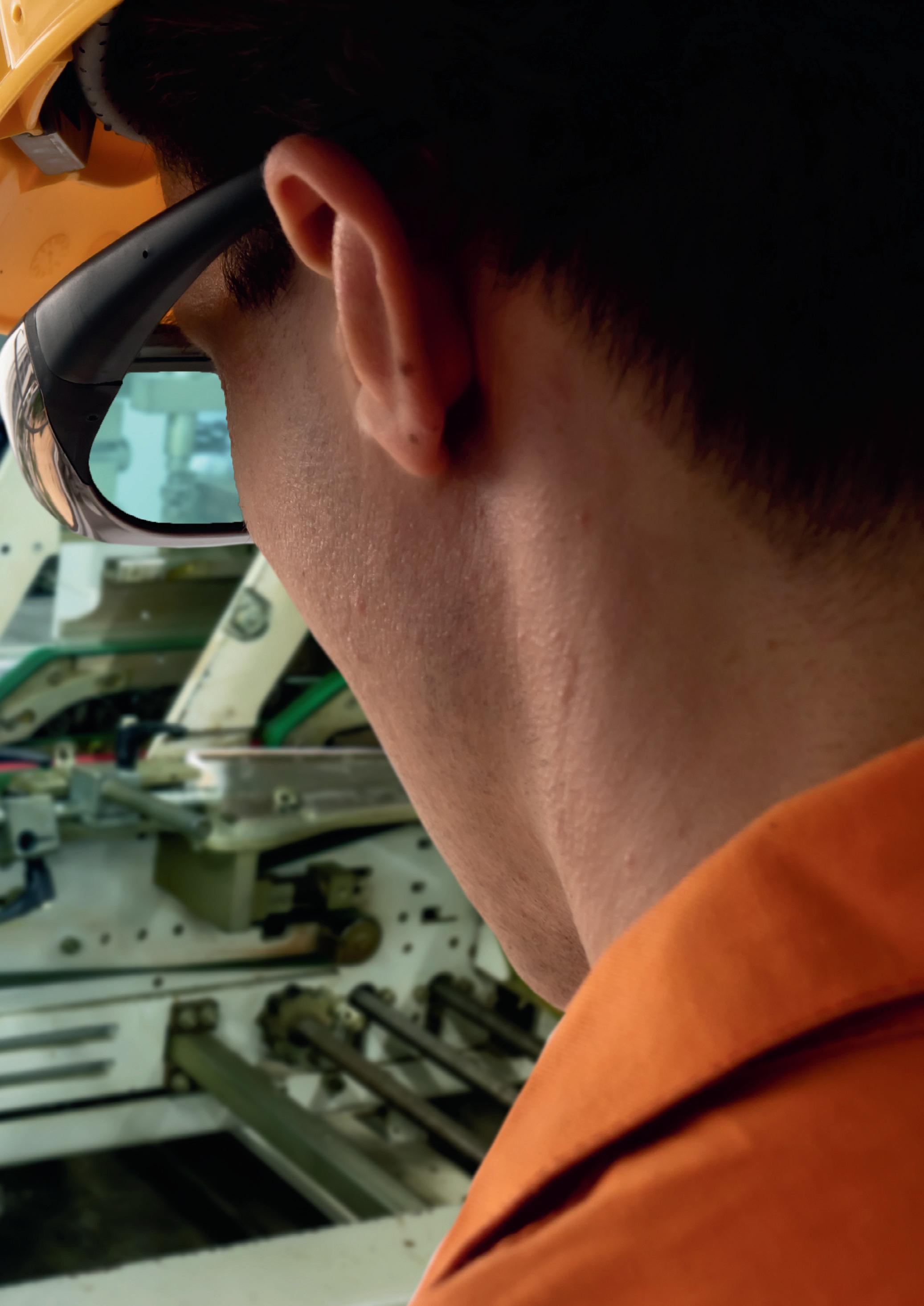
REMOTE CAPABILITIES NOW UNDERPIN THE NEW LOOK OF DAY-TO-DAY OPERATIONS
Kim Fenrich, Global AR/VR and Digital Services Product Manager, ABB Process Automation
Many years ago, somebody wisely pronounced that necessity was the mother of invention, and the past 18 months has proved this beyond doubt.
By now it’s fairly safe to assume that you’ve heard the expression ‘new normal’ more times than you would care to admit. But stepping away from the fact that it is being applied as an allencompassing catchall for almost everything ‘new’ during the pandemic, it has in fact introduced new ways of working that most people — having now experienced the new power at their fingertips — are incredibly eager to adopt and evolve, turning these new working practices into just… the normal.
Key to these new methodologies is digital transformation — another expression saturating the industrial lexicon. Although now a commodity term, by connecting everything, converging IT and OT and massively exploiting data from every possible asset, node and end point, digital technologies are rewriting the rule books regarding what can be done, from where it can be done and who can do it.
But label digital transformation as a passing fad at your own peril. The whole concept of digitalisation was around long before the pandemic and is almost certainly setting the foundations for industry going forward. Indeed, if you have not yet looked at digital technologies and the power of connected devices, you risk being left behind.
Digital technologies arrived just in time
As part of the foundation of digital transformation, it’s safe to say that Industry 4.0 methodologies and IIoT technologies arrived just in time. Had we not had the networks, connectivity and bandwidth to be able work remotely — both effectively and seamlessly — the pandemic may well have resulted in a very different industrial landscape. Even a few months made a difference, and sometimes it was even just understanding the messaging and rationale as opposed to actually deploying the technology. Once digitalisation entered the zeitgeist, there was no stopping it.
This interconnectivity certainly existed before the pandemic; indeed, a slightly less connected and not so smart iteration has been with us for the last decade or so. But a few years back, someone swept all these new ideas into a single concept and gave them a cool name: Industry 4.0 was here to stay. Advances in smart devices and connection architectures, speeds and bandwidths have since opened up a more expansive digital playground upon which all manner of ‘new-normal’ approaches can now be deployed and exploited.
And they’re proven! Ask anyone in safety-related functions or high-hazard applications and these early adopters will regale you with anecdotes about how these remote capabilities have made their job not only easier, but far safer too.
Oil and gas leads the way
Oil and gas has been at the forefront (and has been the testing ground) of many of these developments. Markets where high price volatility exist tend to get nervous of any external influences, so they ruggedise and introduce the means to save costs through reduced time and effort, and connected, digitalised technologies have proven a real boon.
It was no surprise therefore that more traditional land-based industries soon found they needed to adapt. When social distancing was announced, pretty much globally,
the collective intake of breath across the manufacturing community was almost audible, as there was simply little time to prepare. However, engineers are a clever bunch and almost instantly we started to hear about virtual factory acceptance testing (FAT) being performed over Skype and remote maintenance off the back of a mobile phone camera. The world could not stop, so we had to adapt to make things happen.
Indeed, the Skype connection was soon replaced by a dedicated, well-lit, high-definition video stream driven by specialised software. And mark-up capabilities moved from the whiteboard in the design office and the end user’s boardroom into the virtual environment. It all got very virtual very quickly.
Augmented and immersive tech finds its place
There was already a groundswell of technological evolution into virtual technologies, but it was still not commonplace. But these new remote, virtual, augmented and immersive technologies all of a sudden left the realm of being ‘neat bits of kit to play with at a trade show’ and suddenly became day-to-day tools that had to be used… or, to put it simply, nothing would happen. Or if it did, it would not be very fast and it would not be very high tech.
The support function has arguably made (and seen) some of the greatest strides in terms of platforms and offerings, with phone calls and emails being replaced by augmented solutions and dedicated apps, designed, supplied and integrated by leading vendors — especially those in the automation space as suppliers of the technology and infrastructure that underpin successful Industry 4.0 solutions.
These and similar solutions deliver immersive interaction between on-site personnel and remote experts, who can then impart real-time instructions and even overlay advice and graphical pointers on live video feeds from the site, line, cell or machine. It’s like having a highly knowledgeable support engineer on your shoulder, but they are actually sitting at their desk 3000 km away in Zurich.
Fortunately, it was also recognised that technological agnosticism was essential. This was not the time to force customers to exploit specific technologies or platforms. And for this reason, the most flexible solutions support the most common mobile architectures (iOS, Android and Universal Windows Platform), on tablets or phones.
Ensuring business continuity
As with most support and service functions, the primary goal is to impart the means, advice and knowledge to ensure business continuity. So, giving engineers and operators access to in-depth information about their assets and installed base is another primary deliverable. This capability is especially important with reduced operator counts due to social distancing and isolation. No one single person can be expected to know everything about every machine.
In fact, it is this thirst for knowledge and then imparting it in the correct format to those that need it that forms one of the major pillars of Industry 4.0. And what better way to share this knowledge than through immersive overlaid ‘real life’ simulations.
As a result, proactive monitoring of machine data and diagnostics, as well as delivering critical information to improve performance with system-specific software updates, means that self-help is just as important as remote help, especially if it can all be wrapped up in a single-point-ofaccess portal, another solution delivered by leading automation vendors. The end user shouldn’t need to rely on vendors 100%: there has to be this element of self-help… with the understanding that the vendor will jump in if necessary.
Aside from machine data, similar analyses can also be performed on production and operational data, using dedicated analytics platforms that deliver a remote softwareassisted service that not only helps to optimise operations, increase productivity and minimise costs, but also offers definable thresholds that will notify when imminent actions are required.
The same can be said for spare parts management, where reactive and proactive
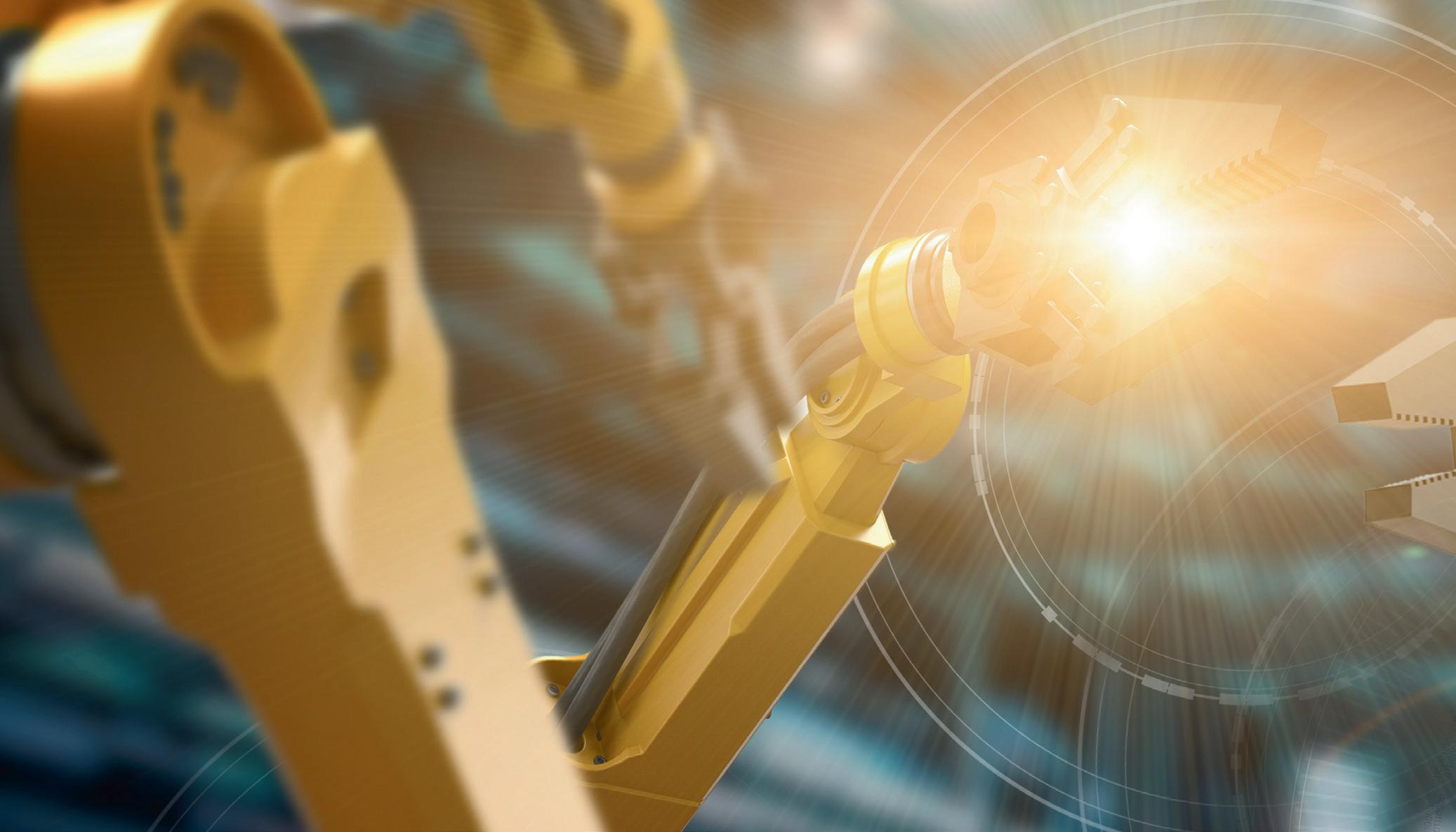
maintenance is essential — even with a limited workforce. Having the right parts on hand at the right time avoids the risk of downtime due to inventory gaps or during supply chain constraints. Machines can even be interrogated for working hours and throughput levels and automated maintenance performed, with spares requests generated but still signed off by a person.
The key word with all these services is ‘remote’, and although things are steadily getting back to normal (there’s that word again), it’s a good bet that we won’t see any mass migrations back to the old ways. People have become comfortable working apart and in different ways and, more importantly, management has found that they can trust employees to work remotely. All it took was a pandemic.
Remote operation: the new normal
In hindsight, sending multiple engineers hundreds and sometimes thousands of kilometres to a factory for three days to commission, install, test or service a machine is a hugely costly exercise — even at cost prices. Sure, foreign trips are nice, but do enough of them and you soon start to yearn for your own armchair. Once everybody had to go remote it was like a huge lightbulb appeared above their collective heads; and something that might have taken years to percolate through the rather traditional psyche of some companies, all of a sudden became standard operating procedure. And it has been global.
So, what’s on the horizon for remote operations? AI is looking very interesting as it starts to reach critical mass and is fed more and more use cases to chew on. Indeed, we may well see an increase in autonomous decision-making and operations much earlier than you think, leaving humans to do what they do best by removing them from mundane repetitive tasks and letting them undertake more value-adding activities that require the qualities and mindset of an actual person. 5G is also going to make the communication landscape a lot more capable. Higher bandwidths and higher speeds will mean more feature-rich remote capabilities, which will deliver even greater depth of services and augmented realism to even the most remote location. Staying on the comms front, Power over Ethernet (PoE) is going to create a paradigm shift, especially in dispersed operations. In fact, we may well soon see the final demise of 4–20 mA, as the smart-device revolution percolates down to equipment that has remained dumb because of the limitations of its network synapses. Analog 4–20 mA simply cannot handle the complexity of anything more than an electrical signal, let alone deliver fully featured operational information possible via PoE.
If it is possible to put a positive spin on the last 18 months, this is the result: industry is now more connected and integrated and, arguably, more capable than it has ever been all thanks to the rather swift push over the digital/remote edge that COVID-19 delivered. You could say that this almost wartime level of innovation and flexibility to adapt and adopt has provided the groundwork for the next industrial revolution. Perhaps we are already there.
ASK ANYONE IN SAFETY-RELATED FUNCTIONS OR HIGH-HAZARD
APPLICATIONS AND THESE EARLY ADOPTERS WILL REGALE YOU WITH
ANECDOTES ABOUT HOW THESE REMOTE CAPABILITIES HAVE MADE THEIR
JOB NOT ONLY EASIER, BUT FAR SAFER TOO.
ABB Australia Pty Ltd
www.abbaustralia.com.au
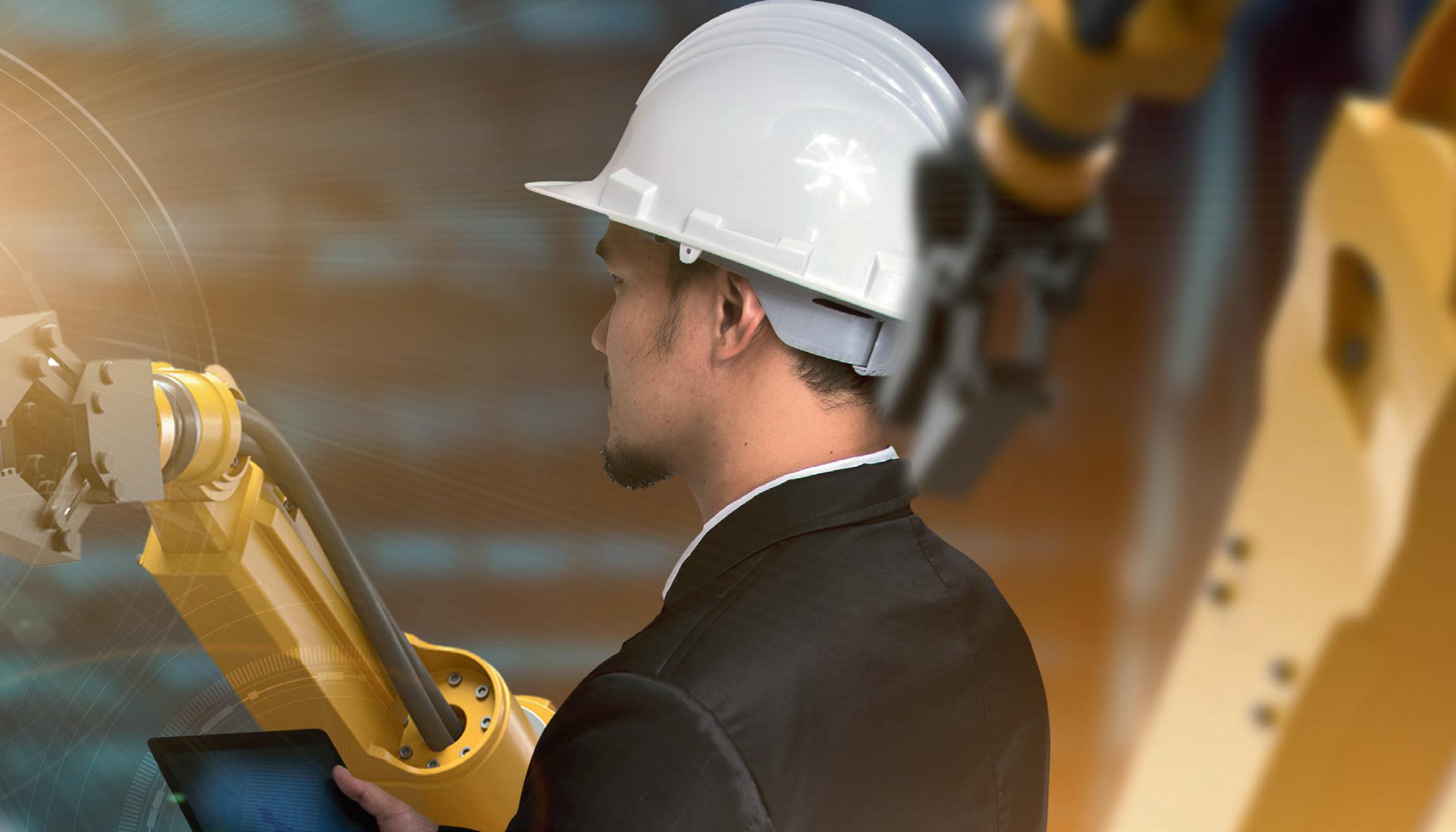
HOT PRODUCTS
ON WWW.PROCESSONLINE.COM.AU THIS MONTH
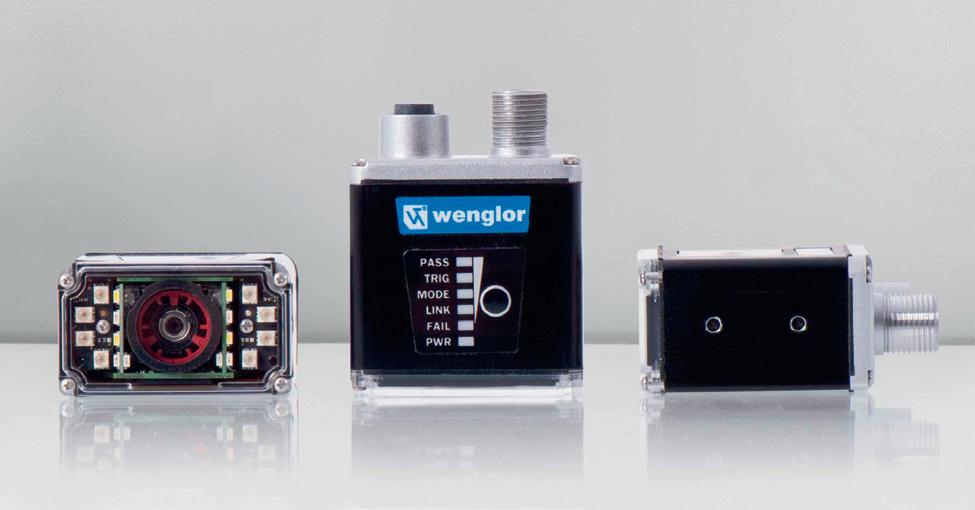
1D AND 2D CODE SCANNERS
Wenglor has released 19 new models of its C5PC series of 1D/2D code scanners.
Treotham Automation Pty Ltd
https://bit.ly/3CCow1h
LASER DISTANCE SENSOR
The Acuity AS2100 laser distance sensor is designed to work well outdoors, in bright light and on difficult targets such as dark, hot and textured surfaces.
Slentech Pty Ltd
https://bit.ly/316pwwJ >
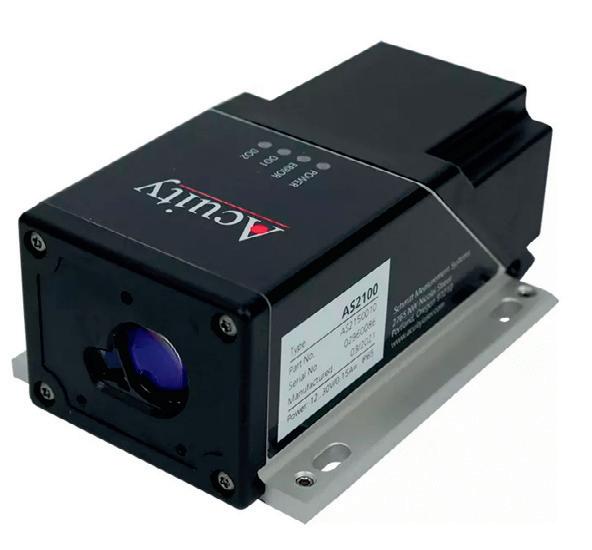
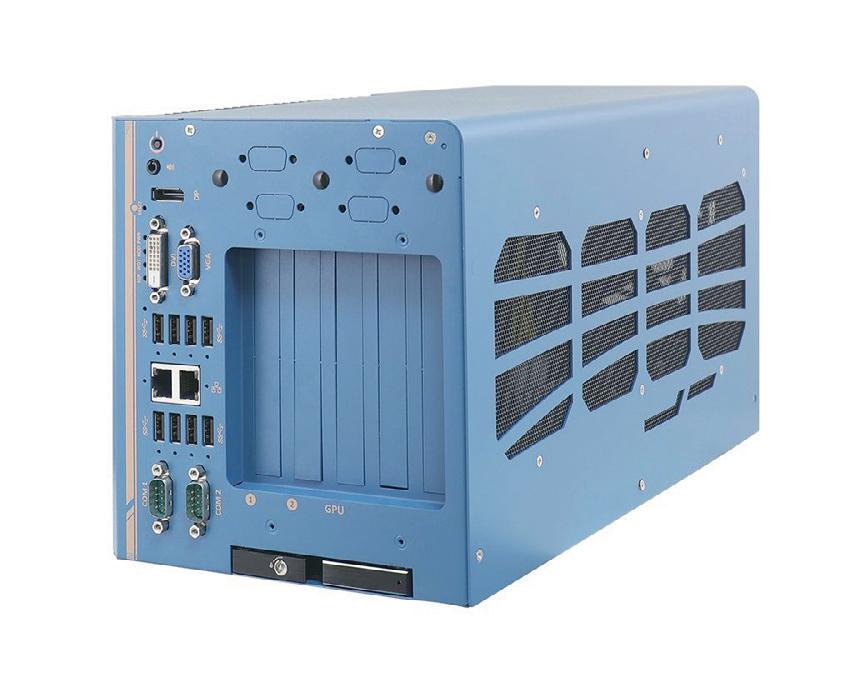
EDGE AI GPU COMPUTING PLATFORM
The Nuvo-8108GC-XL is an industrial-grade edge AI GPU computing platform that can support vision inspection and intelligent video analytics.
Backplane Systems Technology Pty Ltd
https://bit.ly/2Y2Ml3n
INDUCTIVE PROXIMITY SENSORS
Pepperl+Fuchs inductive cylindrical proximity sensors are designed to make installation and operation easy, safe and convenient.
Pepperl+Fuchs (Aust) Pty Ltd
https://bit.ly/31dJ1DD

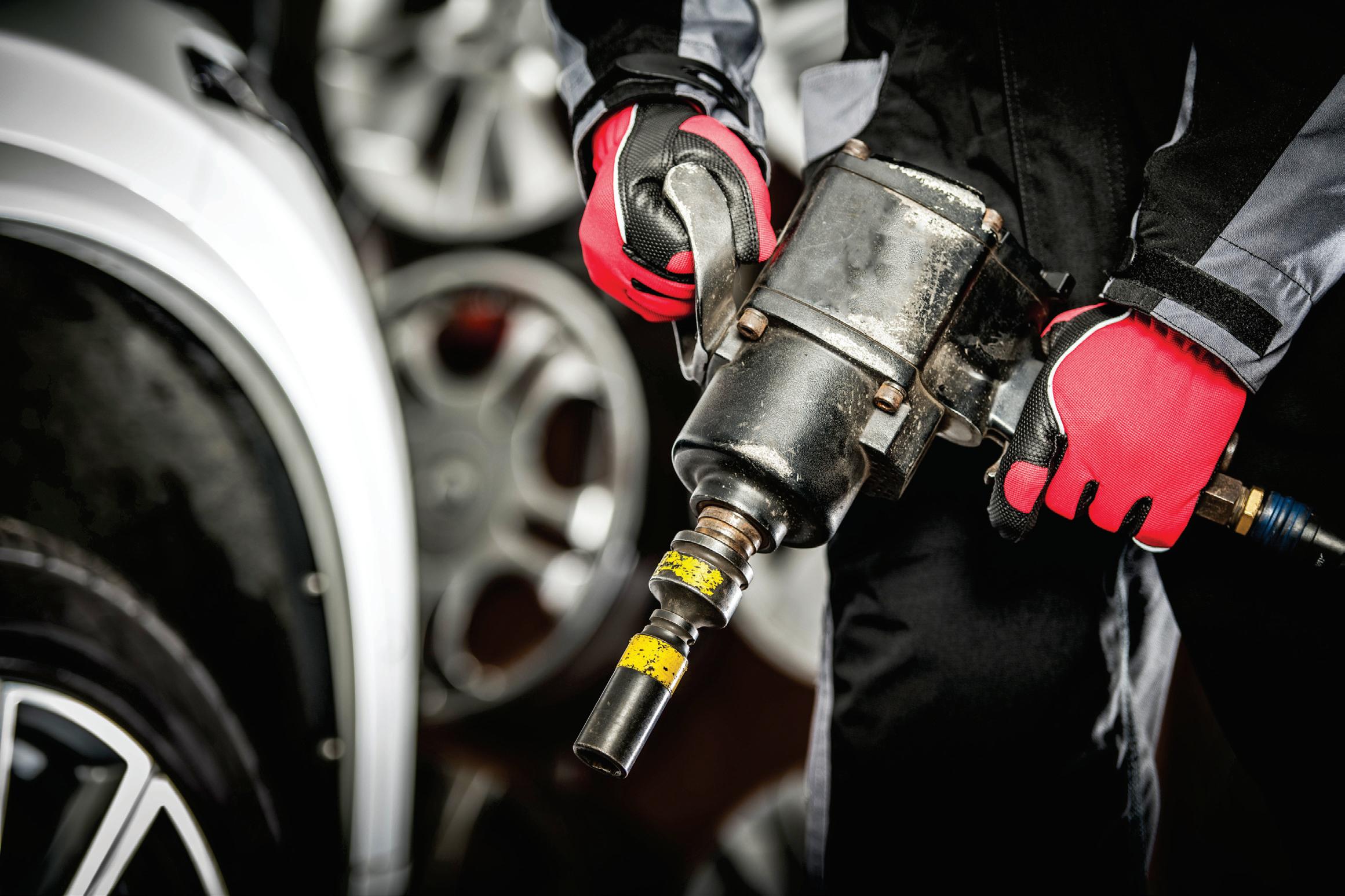
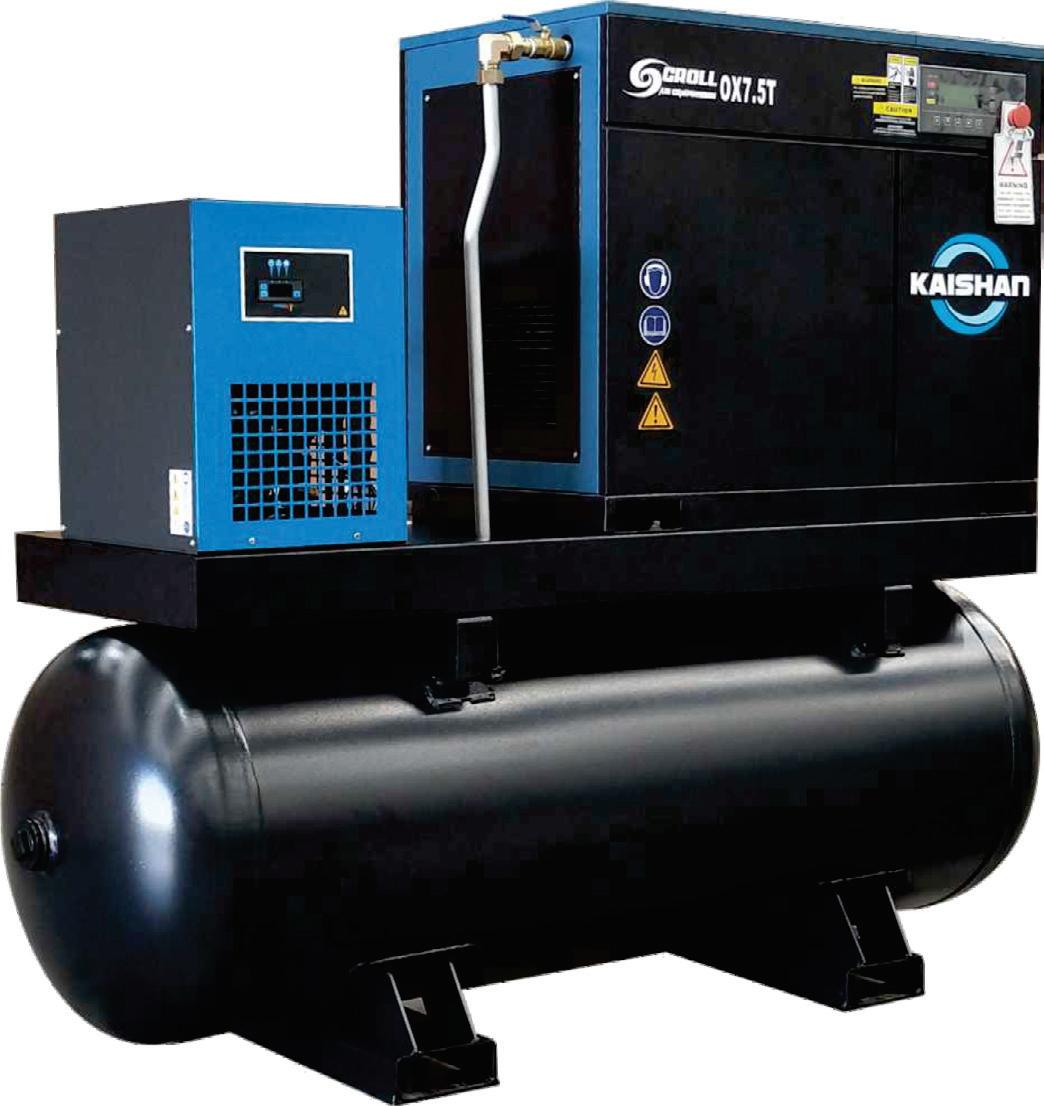
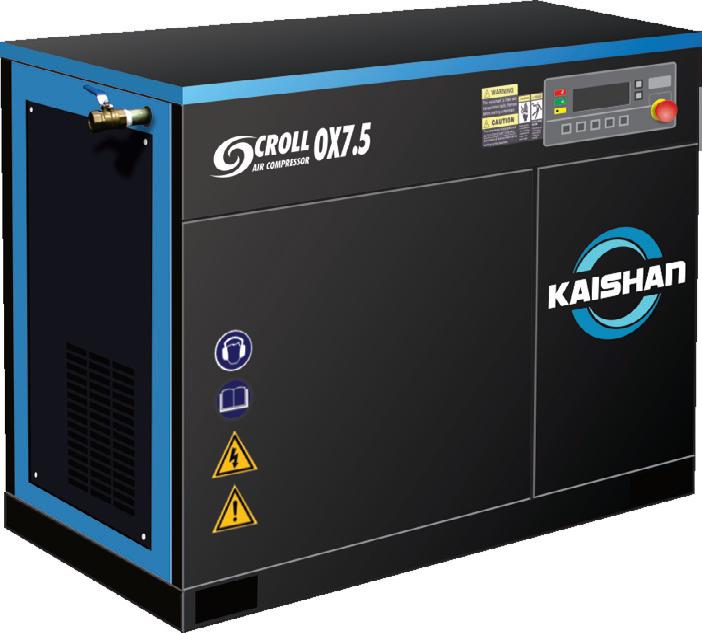
AIR SAFETY FUSES
If a pressurised air line bursts, or a hose coupling accidentally releases, this can result in a thrashing hose becoming a dangerous projectile. The dangers increase dramatically if an air tool is attached, or the line is a large diameter. Installing an air safety fuse can eliminate whiplash hazard and guard against accidental puncture or unexpected maintenance issues. Protect-Air HoseGuard air safety fuses offer simple and effective protection of employees, machinery and equipment. The HoseGuard immediately shuts off the air flow should the volume of air exceed a set value. This value is factory preset to allow normal air consumption when using air tools.
In the event that the air line is severed and the air consumption exceeds the set value, an internal piston instantly shuts off the main flow. An integral bleed hole allows a small amount of air to flow through, enabling the HoseGuard to automatically reset once the main break is repaired.
The lightweight and compact device is suitable for all industry situations where compressed air is used. It is available in aluminium and 316L stainless steel.
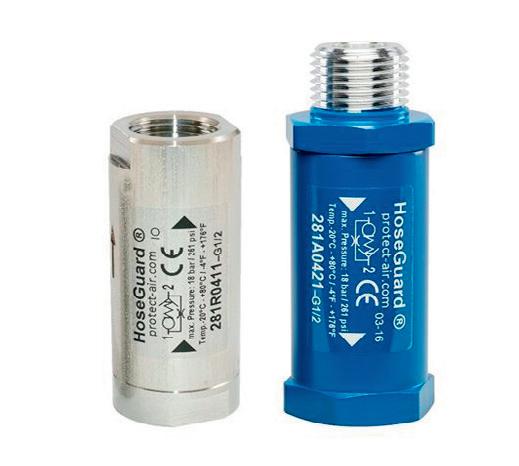
Compressed Air Australia Pty Ltd
www.caasafety.com.au
IO-LINK MASTERS AND HUBS
Turck has expanded its IOLink range to include IP69K 8-port IO-Link masters with M12 power supply, compact IO-Link masters in IP20 and an I/O-Hub with external power supply.
The TBEN-L-8IOL IO-Link master is now available with L-coded M12 power connectors for up to 16 A. With up to 4 A supply the eight ports can run power-hungry equipment such as grippers. Temperature ranges of -40 to 70°C make the rugged IP69K block modules suitable for machine installation.
The compact IP20 FEN20-4IOL master for four IO-Link devices is designed for use where space is restricted.
Turck’s Simple IO-Link Device Integration (SIDI) enables devices and project parameters to be integrated directly into the engineering tool and internal programming logic in the master can control decentralised small-scale tasks in the field. All multiprotocol devices allow data to be queried and processed via Modbus TCP in parallel to existing PLC communication.
The TBIL-L-16DXP-AUX I/O hub with additional external power feed for increased power applications provides consistent galvanic isolation of voltage groups V1 and V2 enables actuators to be switched off safely in an emergency while the sensors remain activated. The I/O hub with universal ports links up to 16 digital inputs or outputs to the IO-Link master. The I/O hubs are available with 7/8″ or M12 power supply.
Turck Australia Pty Ltd
www.turck.com.au
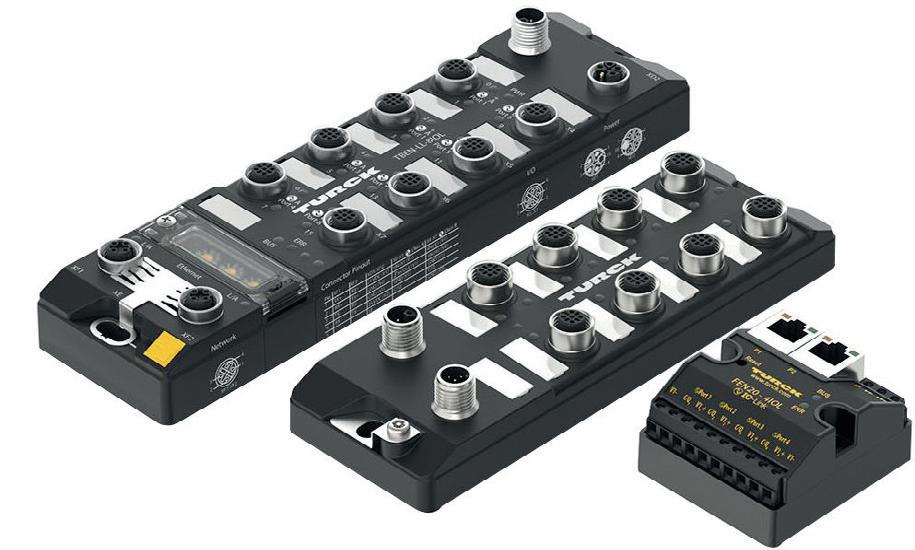
POSITIVE DISPLACEMENT FLOWMETERS
In principle, the flowrate in a positive displacement (PD) flowmeter is calculated from the number of revolutions of a rotor activated by the energy of fluid. Generally, these flowmeters offer high accuracy measurement and are suitable for totalling the flowrate.
The OVAL FLOWPET-5G PD flowmeter is primarily intended for use in boiler feed water and fuel oil metering applications. OVAL says that high accuracy and long service life along with ease of use make this industrial meter suitable as a dedicated tool for heat control.
It has a high accuracy of ±0.5% RD for oil and ±1.0% RD for water, and the flow and instantaneous flow is displayed on a dirt-resistant digital LCD display with touch of mode select switch and a large 14 mm character height. The display can be tilted for better visibility (±75°).
The electronic register-equipped models have an internal, easily replaceable battery with a typical life of years, eliminating the need for an external power source. An external power source is recommended for pulse output models.
The factored pulse width is variable in 1 ms steps with the front panel buttons (adjustable from 1 to 999 ms). Simulated outputs are available for pulse output models, and the pulse and analog output can be simulated at any flow rate for loop tests. A 4–20 mA analog output is also available.
Slentech Pty Ltd
www.slentech.com.au
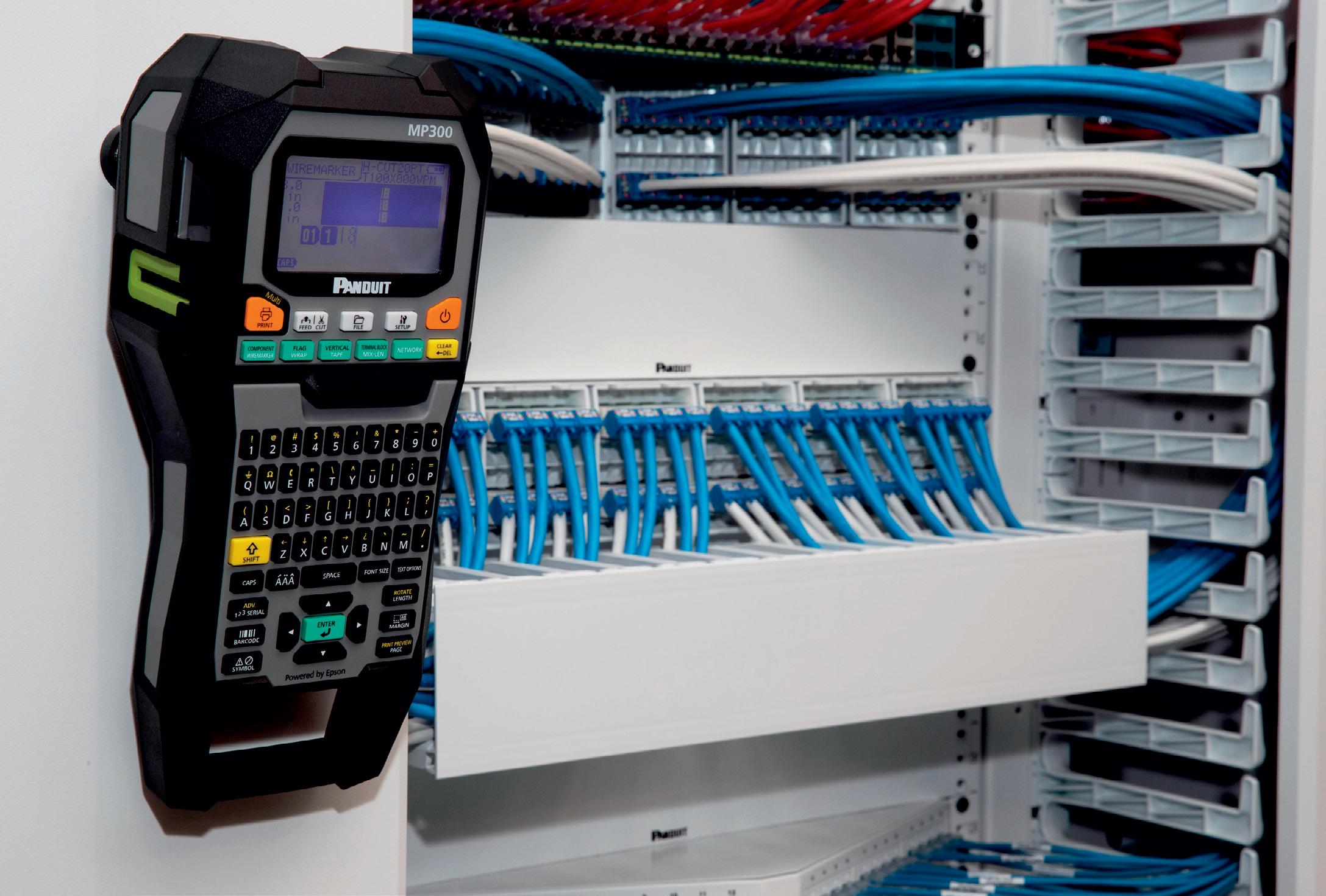
HOW DIGITISATION CONTRIBUTES TO GLOBAL WATER SUSTAINABILITY GOALS
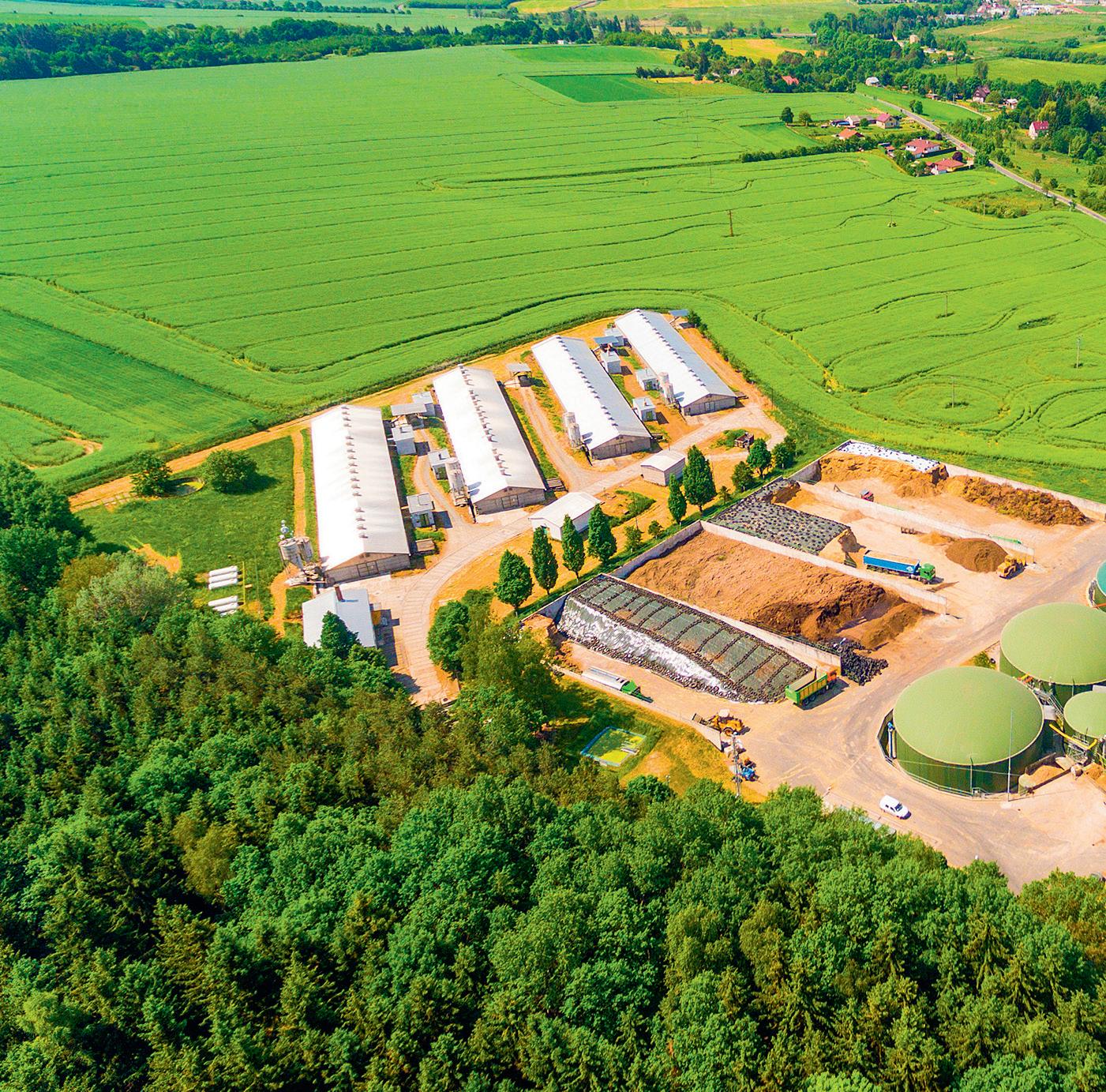
Industries across the globe use water for fabricating, processing, washing, diluting, irrigating, cooling and transporting products. Water is used in copious amounts across mining operations, smelting facilities, petroleum refineries, chemical production and food processing facilities just to name a few. The apparel industry alone, for example, consumes approximately 79 billion cubic metres of water per year — enough to fill 32 million Olympic-size swimming pools. That figure is expected to increase by 50% by 2030. In the mining, minerals and metals industry, the amount of water it takes to produce a ton of steel (250,000 L) is the equivalent of more than 2 years of consumption for a typical family. Not surprisingly, water sustainability has emerged as a critical issue for fueling global economic growth.
High water demand and its declining supply threaten quality, pollution, climate change, urbanisation, aging infrastructure, spiraling energy costs and evolving regulations are just some of the challenges facing the global water sector. Within their internal operations, water and wastewater facilities confront challenges surrounding water leakages and high rates of energy consumption. In the US alone, municipal wastewater treatment plants are estimated to consume more than 30 terawatt-hours per year of electricity, which equates to about $2 billion in annual electric costs.
Even with these seemingly overwhelming challenges, it is becoming increasingly apparent that digital transformation in water processing and delivery operations can begin to help provide lower energy consumption, higher sustainability and less waste.
Water sustainability strategy relies on infrastructure that enables data transparency
Sustainability starts with the ability to extract performance data from the physical infrastructure that supports core operations. In the water and wastewater sector that means water processing and distribution network transparency and traceability of water assets as they move through municipal systems. To achieve transparency, core equipment such as motors, drives and pumps need to incorporate sensors to collect the necessary data. Then cloud-based software tools
©stock.adobe.com/au/Kletr
the UK, it introduced a cloud-based holistic solution for water loss management that monitors incoming system performance data on a near real-time basis from multiple data sources. As a result, leaks and anomalies are detected in real-time, work orders are dispatched and repair works are effectively executed. Operators can further recognise where system fixes are being applied and where work is still outstanding. They can now find and repair leaks much faster than in the past. In fact, their operations management team has been able to reduce leakage by 10 million litres of water per day.
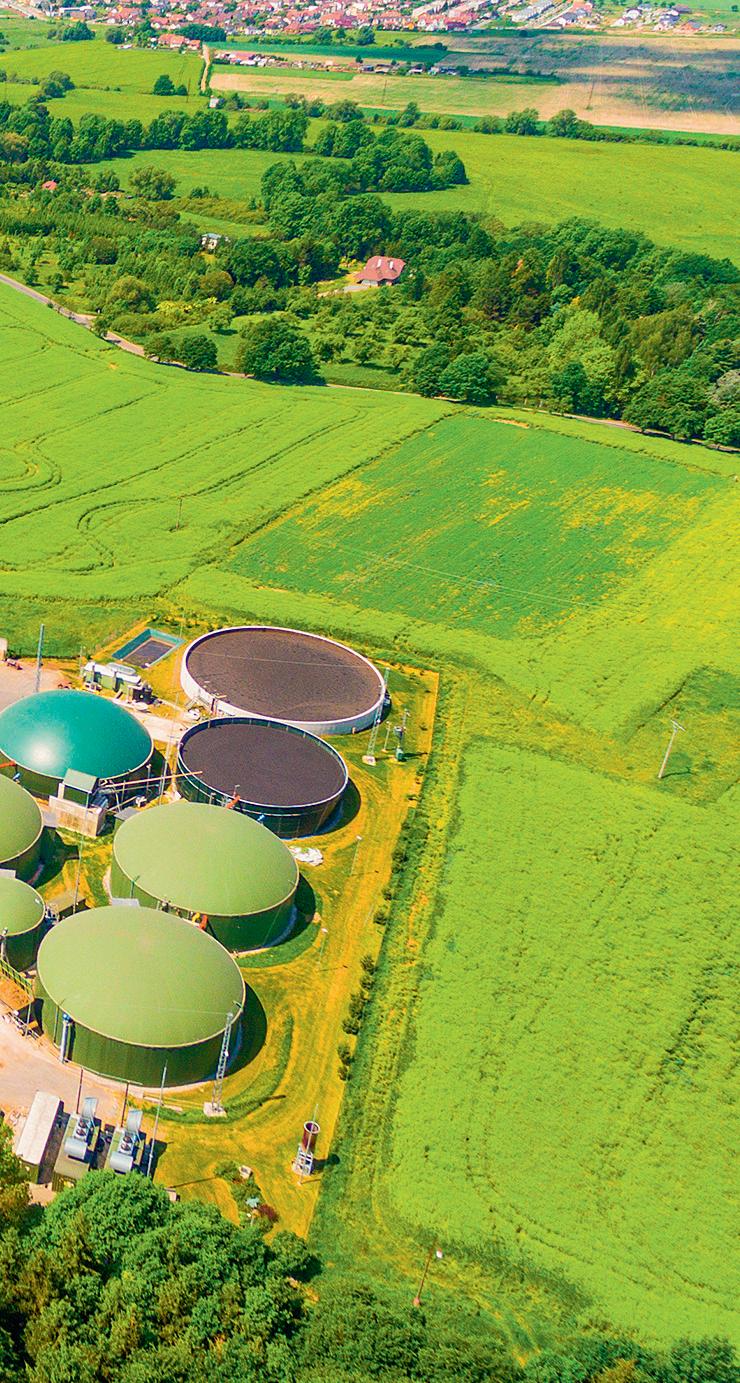
can connect to the various data silos from different sources and consolidate and combine that data with legacy data.
As data is shared back and forth across organisations, trust issues can be addressed by incorporating tools that provide only the necessary and non-confidential pieces of data needed to make accurate decisions in a secure and protected environment. Once access to meaningful data is achieved, machine-learning solutions can be deployed to extract trends from this broad set of data. In this way, faster and more sustainable decisions can be made regarding water assets as they flow through the processes of recycling purification, transportation and, ultimately, consumption.
The highest potential for achieving sustainability objectives lies with training intelligent algorithms, or artificial intelligence (AI), to make sustainability decisions in real-time, incorporating the many data points that no human could process in a timely enough fashion, to yield autonomous decision-making.
Schneider Electric supports such modernisation of water and wastewater operations in several ways. In working with Anglian Water, for instance, one of the largest private utilities in
An ecosystem of partners is key to success
At Schneider Electric, sustainability has long represented a core corporate strategy pillar and the Corporate Knights, the world’s largest-circulation magazine on clean capitalism, has recently named us the most sustainable company on their Global 100 index. We attribute much of this success to our ability to digitise operations. 73% of our investments are directed toward developing newer and even more sustainable solutions. Many of our industrial customers have asked us to share our expertise to help them address both digital transformation and sustainability challenges.
The issue of conserving resources while generating revenues and profitability is a delicate balancing act. No one company can do it alone. Partnership and strategic alliances are critical success factors when it comes to achieving business transformation goals. That’s why, when proposing solutions to water and wastewater firms worldwide, Schneider Electric often partners with major technology firms, like Microsoft, who share our passion for sustainable operations and support our cloud-based digitisation solutions. In fact, Microsoft has pledged to become water positive by 2030. In water-stressed regions, they have established a goal to replenish more water than is consumed by their operations.
For more information
A consultant like Schneider Electric, with extensive water and wastewater industry energy management expertise, can help operators significantly reduce energy bills and water leakage. Our global water wastewater experts can advise how new digital tools can be leveraged to modernise operations. To learn more about how digital transformation can lead to more sustainable operations, visit our water and wastewater home page. You can also watch our on-demand webinar Industrial Sustainability: A Roadmap to Decarbonization and Resource Conservation.

SIMULATION AND DESIGN SOFTWARE
MathWorks has introduced Release 2021b of the MATLAB and Simulink product families. Release 2021b (R2021b) offers many updated features and functions in MATLAB and Simulink, along with two new products and five major updates. Updated capabilities in MATLAB include code refactoring and block editing, as well as the ability to run Python commands and scripts from MATLAB. Simulink updates enable users to run multiple simulations for different scenarios from the Simulink Editor and to create custom tabs in the Simulink Toolstrip.
R2021b also introduces new products supporting wireless communications. RF PCB Toolbox enables the design, analysis and visualisation of high-speed and RF multi-layer printed circuit boards, while Signal Integrity Toolbox provides functions and apps for designing high-speed serial and parallel links.
In addition to the new products, R2021b includes major updates to Symbolic Math Toolbox, Lidar Toolbox and Simulink Control Design, and other products in the areas of deep learning, reinforcement learning, predictive maintenance, and statistics and machine learning.
MathWorks Australia
au.mathworks.com
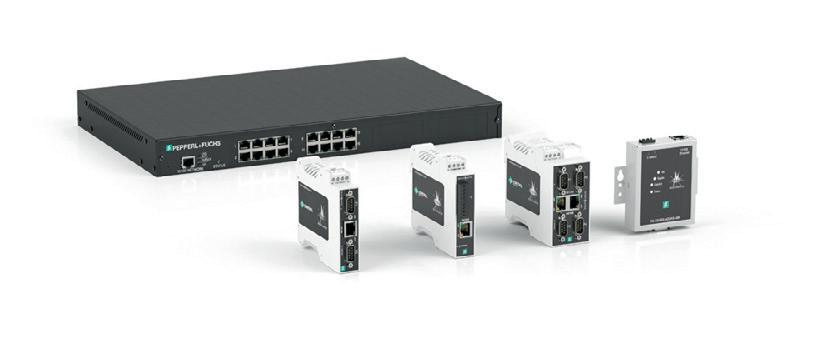
SERIAL GATEWAYS
DeviceMaster serial gateways from Pepperl+Fuchs are designed to connect any serial device to plant Ethernet or the cloud. With a large selection of modules and an integrated web server for setting serial communication parameters, the serial gateways support a wide array of modern and legacy equipment.
The serial gateways enable fast and flexible integration of serial devices such as barcode scanners, RFID read heads, scales, printers and vision systems into Ethernet-based fieldbus systems like Profinet, Modbus TCP and EtherNet/IP. With a single gateway, communication with many serial devices can be supported at the same time using a combination of RS-232, RS-422 and RS-485 serial communication protocols.
An integrated web server allows easy configuration of network settings and port parameters for communication with TCP/IP and industrial Ethernet systems while Windows and Linux drivers support PC-based applications.
DeviceMaster servers and gateways are available with 1 to 32 serial ports with DB9 or terminal block connectors for DIN rail, panel and rack mounting. They support RS-232/422/485, Modbus RTU and ASCII for device connectivity.
Pepperl+Fuchs (Aust) Pty Ltd
www.pepperl-fuchs.com
DRY-RUNNING ROTARY SCREW COMPRESSORS
Kaeser Compressors’ latest range of dry-running rotary screw compressors features its integrated Heat of Compression (i.Hoc) rotating dryer to provide a source of compressed air at a pressure dewpoint as low as -30°C, with a space-saving and energy-efficient design.
The dryer is integrated into a dry-running compressor and desiccant is contained in a drum through which the compressed air flows. Compressed air drying and regeneration of the desiccant occur continuously within a single pressure receiver but are separated both structurally and in terms of the process. Slight pressurisation of the drying sector ensures that once dried, the compressed air does not reabsorb moisture from the regeneration air flowing by in the adjacent sector.
Following the final air compression stage in the compressor, the hot compressed air is diverted directly to the drying sector of the integrated rotating dryer before it exits the compressor. The heat arising as a result of compression is also used for desiccant regeneration. This heat is freely available as no additional energy is required for the drying process. Low pressure dewpoints of -20°C down to -40°C in special conditions can be achieved by the dryer. It uses the flow of hot compressed air available at the end of the second compression stage for regeneration purposes. The discharge temperature of the dryer following the second stage (the regeneration air temperature) can be increased by a controlled bypass around the first compression stage cooler.
Kaeser Compressors Australia
au.kaeser.com
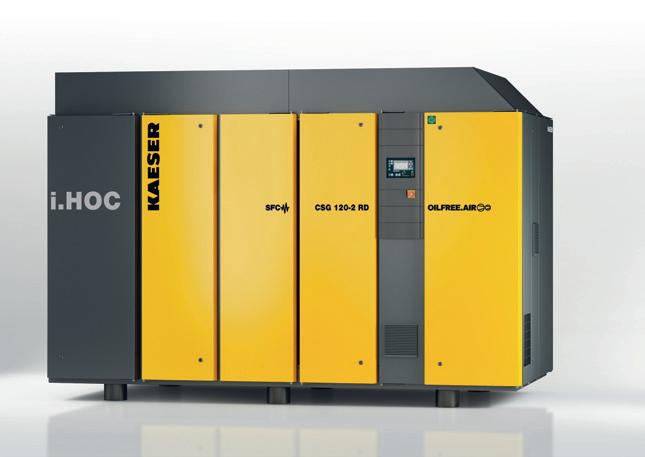
COMPACT TRIANGULATION LASER SENSOR
The ultra-compact Acuity AR100 triangulation laser measurement sensor offers ranges from 10 to 500 mm with a single case size. It is also fast, with a maximum sampling rate of 9.4 kHz. The AR100 has a linearity of ±0.05% of the full measurement range for most models, and comes with a Class 2, eye-safe laser (<1 mW) in either red (660 nm) or blue (405 nm). The AR100’s enclosure has a rating of IP67, so it can withstand dusty environments and occasional splashes. The AR100 has a standard RS232 or optional RS485 serial interface for communication with a computer or PLC, and also comes with an analog output of 4–20 mA or 0–10 V. The analog output can be programmed to have a custom measurement span, and the minimum and maximum can be set to any points in the laser’s range. This laser triangulation sensor also has a limit output for indicating alarms, which can be useful for triggering an external device when a target reaches a set position. The AR100 also has an external trigger input to take single distance measurements.
The AR100 triangulation laser sensor is suitable for applications with tight size and mass budgets with high performance requirements.
Slentech Pty Ltd
www.slentech.com.au
